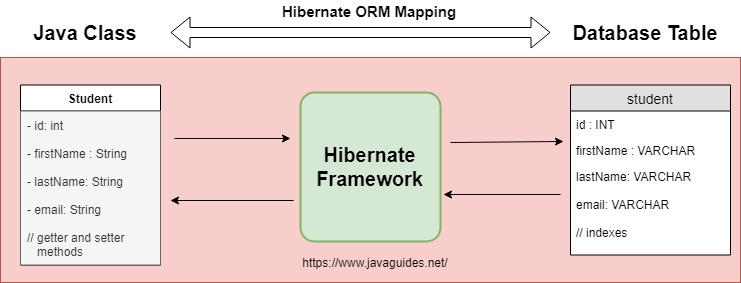What Is the Difference Between Hibernate and Spring Data JPA?
The two technologies are very similar, so what are the differences?
Join the DZone community and get the full member experience.
Join For FreeIn this quick article, I would like to describe what is the difference between Hibernate ORM framework and Spring Data JPA.
Let's first know the definition of JPA, Hibernate, and Spring Data JPA, so this will make it easy to discuss the difference between Hibernate and Spring Data JPA.
What Is Java Persistence API?
The Java Persistence API provides a specification for persisting, reading, and managing data from your Java object to relational tables in the database.
Read more about JPA at JPA Tutorial - Java Persistence API (you will learn everything about JPA here).
What Is Hibernate Framework?
Hibernate is an object-relational mapping solution for Java environments. Object-relational mapping or ORM is the programming technique to map application domain model objects to the relational database tables.
Hibernate provides a reference implementation of the Java Persistence API that makes it a great choice as an ORM tool with the benefits of loose coupling.
Example: Below diagram shows an Object Relational Mapping between the Student Java class and the students table in the database.

Read more about Hibernate framework at Hibernate ORM Tutorial (you will learn everything about Hibernate here).
Note that JPA is a specification and Hibernate is a JPA provider or implementation.
What Is Spring Data JPA?
Spring Data is a part of the Spring Framework. The goal of Spring Data repository abstraction is to significantly reduce the amount of boilerplate code required to implement data access layers for various persistence stores.
Spring Data JPA is not a JPA provider. It is a library/framework that adds an extra layer of abstraction on the top of our JPA provider (like Hibernate).
Read more about Spring Data JPA at Spring Data JPA Tutorial (you will learn everything about Spring Data JPA here).
Now, you are familiar with the Definition of JPA, Hibernate, and Spring Data JPA. Now, let's discuss the difference between Hibernate and Spring Data JPA.
What Is the Difference Between Hibernate and Spring Data JPA?
Hibernate is a JPA implementation, while Spring Data JPA is a JPA Data Access Abstraction.
Spring Data offers a solution to GenericDao custom implementations. It can also generate JPA queries on your behalf through method name conventions.
With Spring Data, you may use Hibernate, Eclipse Link, or any other JPA provider. A very interesting benefit is that you can control transaction boundaries declaratively using the @Transactional annotation.
Spring Data JPA is not an implementation or JPA provider, it's just an abstraction used to significantly reduce the amount of boilerplate code required to implement data access layers for various persistence stores.
I hope this article is useful to you. You can find more answers to this question at StackOverflow.
Hibernate provides a reference implementation of the Java Persistence API that makes it a great choice as an ORM tool with the benefits of loose coupling.
Remember, Spring Data JPA always requires the JPA provider such as Hibernate or Eclipse Link.
You might be interested to read What is the Difference Between JPA and Hibernate?
Published at DZone with permission of Ramesh Fadatare. See the original article here.
Opinions expressed by DZone contributors are their own.

Comments